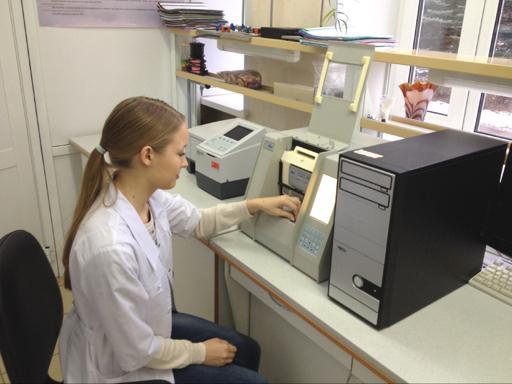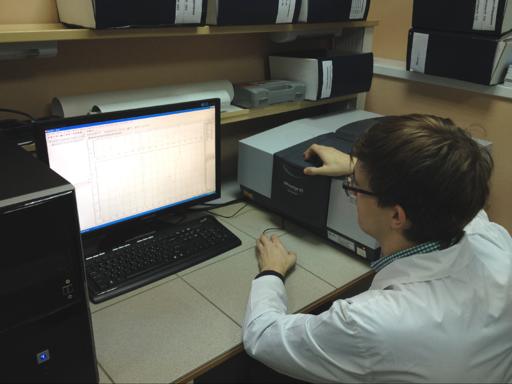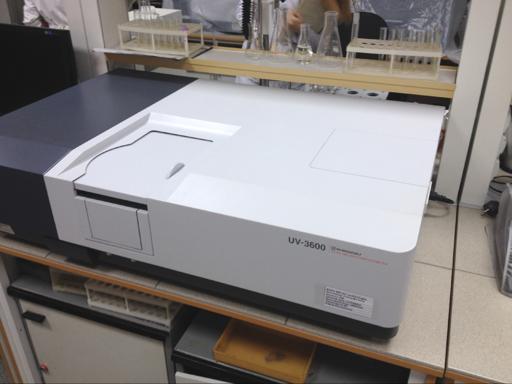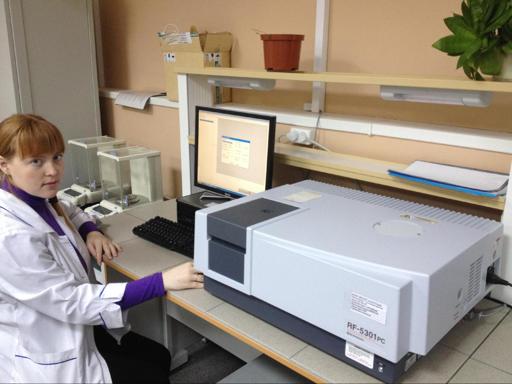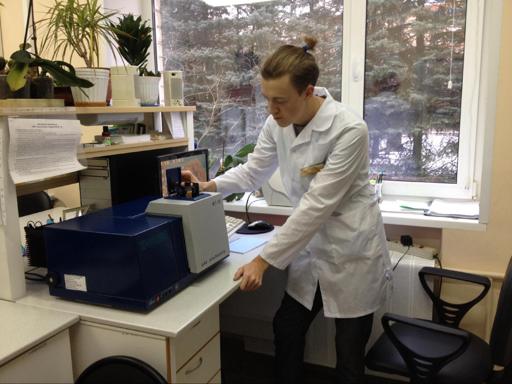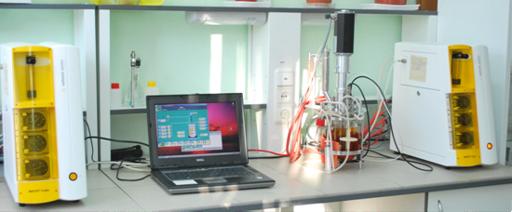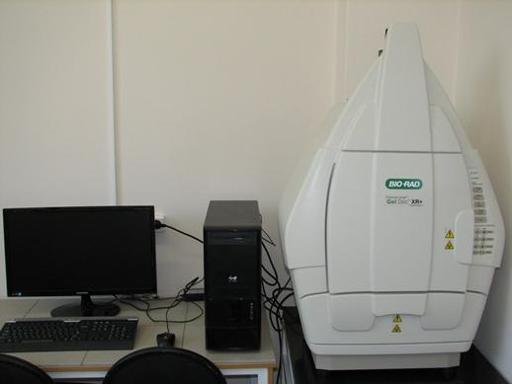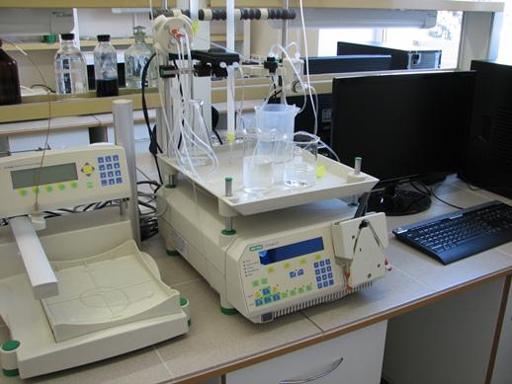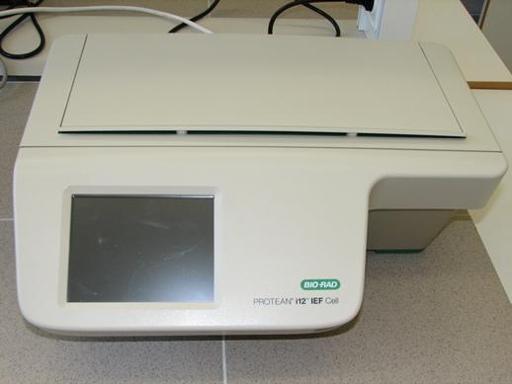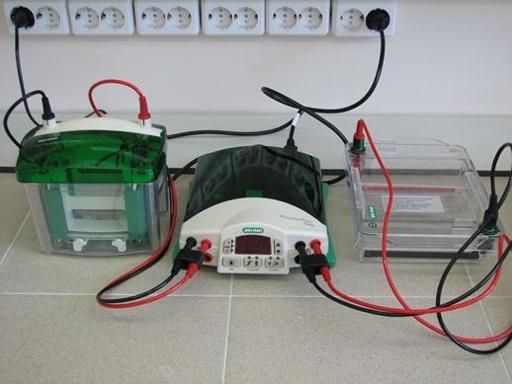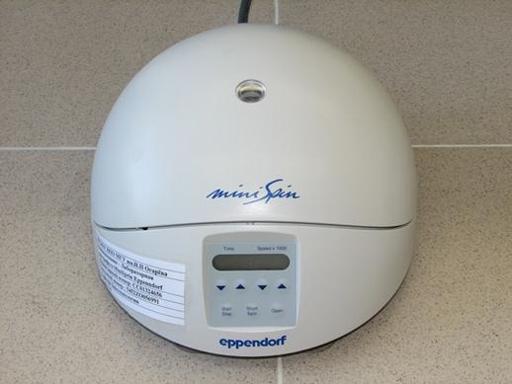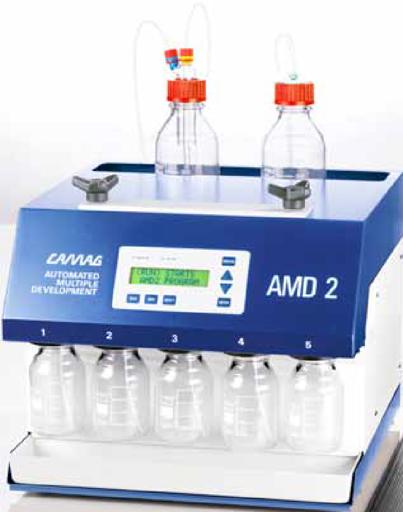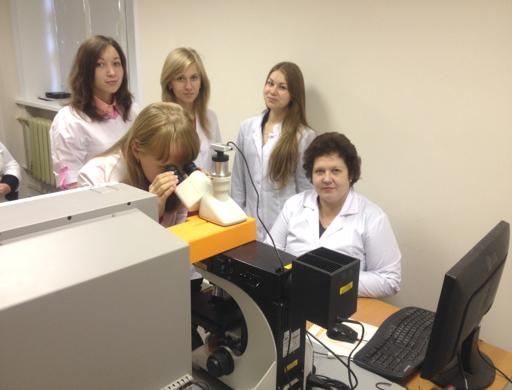Laboratory equipment of biotechnology, bioengineering and biochemistry department
The department includes several laboratories such as fundamental biotechnology lab, microbial polysaccharides lab, biocomposites lab, laboratory of physical and chemical methods of analysis, fermentive biotechnology lab, biological products lab, laboratory of biophysics, cell biochemistry lab that are fitted with modern analytical equipment for chromatographic, spectral, morphological, biochemical, biophysical and microbiological researches and also with biotechnological equipment and material testers.
Chromatographic Equipment List:
– LC-20A high-efficient liquid chromatograph with refractometric and UV-detector (Shimadzu, Japan);
– GC-2010 Plus gas chromatograph (Shimadzu, Japan),
– LC-20AD liquid chromatograph (Shimadzu, Japan);
– Kapel’-105 capillary electrophoresis system;
– ASE 150 automatic extractor.
Equipment Description
LC-20AD liquid chromatograph

Configuration of the liquid chromatograph includes pump, low pressure quaternary gradient valve, systemic controller, vacuum degasifier, column heating oven, spectrophotometric detector, refractive index detector, samples manual batcher, device operation and data processing software, chromatographic columns and pre-columns. The device is capable of defining carbohydrates and hydrocarbons.

GC-2010 Plus chromatograph

Gas chromatograph with flame-ionizing detector, split/splitless injector, GOST 51483-99 columns, compressor, hydrogen generator, set of filters for gas purification. The device is capable of defining methyl ethers of fatty acids, acetates, natural styrenes, alcohols.
Kapel’-105 capillary electrophoresis system
The system is intended for cations, vitamins, colorants, preservatives tests for drinks, water (drinking and waste), food and fodder products.
ASE 150 Automatic Extractor

The extractor is intended for cations, vitamins, colorants, preservatives tests for drinks, water (drinking and waste), food and fodder products.
Spectrometric Equipment List:
– InfraLUM® ФТ-10 infrared analyzer,
– optical set for registration of absorption in UV and visible range of spectrum with parallel fixing of pH value and oxygen concentration in fluid environments (Ocean optics, USA);
– UV-Mini-1240 UV-spectrophotometer;
– UV-3600 spectrophotometer;
– RF-5301PC spectrofluorometer;
– IRPrestige-21 infrared Fourier spectrophotometer.
Equipment Description
IR Prestige-21 IK-Fourier spectrometer
Infrared spectrometer with Fourier transform, single-beam, with alignment optics and external beam lead, with possibility of spectral range expansion to near and far IR-areas by means of basic blocks from spectrometer manufacturer complete with a KBr demountable cell, a film holder, a tablet holder and a press. Minimal resolution in middle (standard) and far (option) infrared bands is not more than 0,5 cm-1; capability to work with resolution of 1; 2; 4; 8; 16 cm-1. Resolution in near (option) infrared band is not more than 2 cm-1; capability to work with resolution of 4; 8; 16 cm-1. Ratio of signal to noise is not less than 40000:1 (4 cm-1, 1 min., 2100 cm-1, measured as peak to peak). Adjustment of intensification coefficient in the range of 1-128 is automatic or manual at the choice of operator.
UV-3600 spectrophotometer
The device for spectrometric researches possesses the following principal specifications: dual-beam, scanning; double monochromator, concave grating premonochromator and Curny-terner monochromator with aberration correction; three detectors: PMT, InGaAs, PbS; radiation sources: deuterium arc lamp and halogen lamp of not more than 50 W power, automatic adjustment; spectral band of 185–3300 nanometers; 8-grades band gap: from 0,1 to 8 nanometers in UV / visible range, 10-grades band gap: from 0,2 to 32 nanometers in near IR area; spectral resolution of 0.1 nanometers; scattered radiation level of no more than 0,00008% (220 nanometers), 0,00005% (340 nanometers), 0,0005% (1420 nanometers), 0,005% (2365 nanometers); wavelength setting accuracy is not worse than ± 0,2 nanometers (UV and visible areas), ± 0,8 nanometers (near IR area); wavelength setting reproducibility is not worse than ± 0,08 nanometers (UV and visible areas), not worse than ± 0,32 nanometers (near IR area); baseline drift is no more than 0,0002 a.u. / hour; noise is not more than 0,00005 Abs (500 nanometers), 0,00008 Abs (900 nanometers), 0,00003 Abs (1500 nanometers) (root-mean-square value at 0 Abs, a gap of 2 nanometers, 1 s) absorbance units; scanning speed in continuous scanning mode is a variable from 4500 nanometers/min. and less for UV and visible band; from 9000 nanometers/min. and less for the near infrared band blocked by PMT and InGaAs detectors; from 4000 nanometers/min. and less for the near infrared band blocked by PbS detector; wavelength reorganization speed in the mode of wave to wave transition is 18000 nanometers/min. less for UV and visible band; 70000 nanometers/min. for near infrared band; automatic switching of radiation sources, at the choice of operator in the range of 282-393 nanometers, with 0.1 nanometers discretization; photometric range is from -6 to +6 Abs; photometric accuracy is ± 0,002 a.u. (at 0,5 a.u.) and ± 0,003 a.u. (at 1,0 a.u.); photometric reproducibility is ± 0,0008 a.u. (at signal quantity of 0,5 a.u.) and ± 0,0016 a.u. (at signal quantity of 1,0 a.u.); scanning and band transformations at various speed, comparison of various spectra, possibility of spectral foldover, automatic spectrum scaling, normalization, indication of maxima/minima, area determination, derivation to the 4th degree, smoothing, rooting, logarithmation, Kubelka-Munk transformation, averaging, interpolation; kinetic measurements such as measurement of absorption dependence on time, determination of enzymatic activity, one - or two-wave measurements, calculations according to Michaelis-Menten, creation of graphs (according to Michaelis-Menten, Lineweaver-Burk, Hannes, Wolf, Eadie-Hofstee), Dixon and Hill graphs, reagent input registration at measuring; quantitative analysis – the analysis according to calibration curves from 1 to 3 orders on the K-factor, measurements on 1–3 wavelengths, averaging of results; report preparation.
RF-5301PC Spectrofluorimeter
The RF-5301PC spectrofluorimeter is intended for carrying out quantitative and qualitative analyses by the method of measurement of fluorescence radiated by the substance irradiated by a light source.
– The source of radiation is 150 W xenon lamp with a deozonator.
– F/2.5 exaltation and emission monochromators with concave concentrating holographic gratings, 1300 slits/mm.
– Spectral range of measurement is not narrower than 220-900 nanometers and zero order.
– Wavelength scale: 220–990 nanometers.
– Detector: photo multiplier.
– Crack width is 1,5; 3; 5; 10; 15 and 20 nanometers.
Scanning speed in the mode of continuous scanning is 7 speeds from 5500nm/min and lower.
– Installation speed on the chosen wavelength is 20000 nanometers/min.
– Inaccuracy on wavelengths scale is not more than ± 1,5 nanometers.
– Excitation energy compensation method: return coupling to the metering photo multiplier, monitoring of monochromatic radiation.
– Sensitivity: ratio size signal/noise is 150 for Raman band of distilled water (350 nanometers, 5 nanometers crack, 2 c time constant).
– Time constant is 0,02; 0,03; 0,1; 0,25; 0,5; 2; 4 and 8 sec.
– Sensitivity ranges: two ranges of sensitivity – "High" and "Low" (50 times difference).
"InfraLYUM® FT-10" infrared analyzer
Fixed laboratory instrument which can quickly define the structure and quality of such products as wheat, barley, rye, oats, wheat and rye flour, fodder yeast, compound feeds, powdered milk, cottage cheese, cheeses, cheese masses, mincemeat, etc. The majority of types of tests are analyzed without preparation.
UV-Mini-1240 one-beam scanning spectrophotometer

List of Equipment for Microbiological Researches:
–Biostat Aplus bioreactor with 1 l. working volume;
– BIOSTAT® PBR-2-S bioreactor with 3 l. working volume;
– BIOSTAT Bplus bioreactor with 5 l. working volume;
– BIOSTAT Cplus bioreactor with 30 l. working volume ("Sartorius", Germany);
– ES-20/60 BIOSAN shakers incubators;
– thermostats;
– MLR-351H climatic chamber (Sanyo, Japan);
– automated interference microscope on the basis of МИИ-4М microscope;
– Micros (Austria) and Unico (the USA) microscopes with digital visualization systems;
– TFD8503 freeze dryer;
– Vi-CELL XR cell viability analyzer.
– Countess automatic cell counter;
Equipment Description
BIOSTAT® Aplus fermenter (bioreactor)
It is intended for cultivation of microorganisms in aerobic and anaerobic conditions. It is equipped with рН, temperature, oxygen monitoring.
BIOSTAT® Bplus Fermenter (bioreactor)
BIOSTAT® Bplus is a laboratory fermenter created for solution of a wide range of research tasks, improvement of existing productions and also for receiving small lots of products. The main unit of BIOSTAT® Bplus fermenter is made of stainless steel and has a color graphic touch display. BIOSTAT® Bplus fermenter is manufactured in the form of unary (Single) or double (Twin) configuration.
Areas of application: works with microorganisms and cell cultures; research works for industry and science; experiments on scaling at transition from a shaker with flasks; development of fermentation processes and their optimization; small-scale production.
Features: systems for working with one (Single version) or two culture bottles (Twin version); culture bottles with working volume from 1 l to 10 l with a holder for bottle storage, handles and a sampling system; monitoring of temperature, рН, dissolved oxygen, level, foam, Red/Ox, turbidity, mixture and gases consumption; mixer drive with mechanical gasket (speed interval is from 20 to 2000 rpm), a bubbler; sterile filters and a coming-out gases condenser.
Systems and strategy of aeration depending on a range of application: for microorganisms: O2 Enrichment; Gas Flow Ratio Control; for cell cultures: Exclusive flow; Additive flow; "bubble-free" aeration for cell-like cultures through a semipermeable membrane; thermostatic system with an integral pump; all vessels are accessible with jackets or without; the device case is made of steel, suitable for cleaning; modern convenient touch display for process control; possibility of padding sensors connection for measurement of optical density of the environment and the count system of Red/Ox-potential, weight sensors; MFCS/DA software for visualization and data processing.
BIOSTAT® Cplus Fermenter (bioreactor)

BIOSTAT® Cplus is a reliable fermenter-bioreactor sterilized in-place with vessels working volumes of 2 liters to 30 liters. BIOSTAT® Cplus is developed taking into account modern technologies and directions of design. The completed and ready to work systems include all necessary components for reliable and convenient work with microorganisms or cell-like cultures. Besides, the philosophy of BIOSTAT® Cplus modular design allows developing individual configurations for specific applications.
Ranges of application: pilot production; manufacture processes development; small-scale production.
Features: desktop version with working volumes of 2 l and 5 l; special open frame design, providing working space economy and service convenience, for culture bottles with working volumes of 10-30 l; the main unit, feeding lines and fermenter are made of stainless steel for mild processing; possibility of choice from four strategies of gas supply; color graphic touch control display; possibility of heating type choice – either electric or steam; sensors of temperature, рН, dissolved oxygen, foam level and culture liquid, mixer drive with mechanical or magnetic seal, a bubbler, sterile filters and a coming-out spent gas cooler; management and control of stirring speed, рН, concentration of dissolved oxygen, temperatures, supply of substratum and defoamer, gas mixture composition, etc.; possibility of padding sensors connection for measurement of optical density of the environment and Red/Ox-potential; MFCS/Win software for visualization and data processing.
Automated interference microscope on the basis of MII-4M microscope

The microscope gives the chance to study living unpainted cells, to carry out cells morphometry, index of double refraction, assessment of cell population condition, and also to carry out dynamic phase microscopy.
Micros MC 100 (TS) Video Set

With the help of video camera and trinocular head the image is displayed on the monitor and checked in real time.
BIOSTAT® PBR 2 S fermenter (bioreactor)

BIOSTAT® PBR 2 S fermenter (bioreactor) of 3 l with a photoluminescent block for photosynthesizing microorganisms cultivation
It is intended for photosynthesizing microorganisms cultivation in aerobic and anaerobic conditions. It is equipped with рН, temperature, oxygen, turbidity control.
MLR-351H Climate Chamber

Cultivation of plants in different conditions of illuminating intensity, humidity and temperature for biological products testing. Besides, it can be used as luminostat for cultivation of water fleas, algas (for water biotesting).
SANYO, MDF-U53V vertical low-temperature deep freeze

The device creates stable low-temperature environment with minimum temperature fluctuations that makes it ideal equipment for storage of blood cells and biological exemplars sensitive to temperature variations.
It provides cooling temperature up to – 860C and stable long-term storage.
FD freeze dryer
Deaquation of biological objects: fabrics, proteins, nucleic acids, vaccines and so forth by a liophilisation method (cryogenic exsiccation of frozen biological products in vacuum) for the purpose of their long-term storage.
Using of the freeze dryer guarantees: high-quality and fast bioobject drying; retention of biopolymer structure in the course of liophilisation; preservation of biological activity of dried-up biological product in the course of long-term storage.
MLS-3781L upright autoclave

ES-20/60 shaker-incubator

It provides smoothly (or intensive) stirring in the flasks installed on the platform.
Vi-CELL XR cell viability analyzer

It defines the quantity of living and dead cells and the total amount of cells using trypan blue.
COUNTESS automatic cell counter

It defines the quantity of living and dead cells, and also the total amount of cells, using trypan blue.
PHOTOCOR COMPLEX modular spectrometer of dynamic and static light scattering for nanoparticles size measurement

Modular spectrometer of dynamic and static light scattering for nanoparticles size measurement is intended for measurement of sizes and diffusion coefficients of nanoparticles in dispersions and definitions of molecular characteristics of polymeric molecules, terminating particle sizes in the range from 0,5 to 6000 nanometers.
PM 400 Planetary Mill (Retsch, Germany)


PM 400 planetary mill with grading limit of less than 1 micron.
Equipment List for Bioplastics Manufacture and Tests:
– GT-7014-H50C thermohydraulic hot isostatic press for polymers with independent cooling system and LC control panel;
– GT-7016AR pneumatic stamping press for exemplars; UAI-7000M universal double-column testing machine;
– stretch testing machine, ultimate stretch/gap strength, flaking off, seam durability, tearing, polymeric films XLW (PC) – Auto puncture;
– analyzer of mechanical strength characteristics of HTT-L1sheet coverings fresh seals;
– VT-04F portable rotor viscosimeter for viscosity test of dispersions and quality control;
– CZY-6S device for determination of stickiness/adhesion;
– CHY-C2 automatic high-res thickness meter;
– MS-70 thermo-grav humidity analyzer;
– H-200L automatic high-res densitometer;
– GT-7090-H thin-film thermotester for shearing deformation definition at elevated temperature;
– Hamilton Beach triple-spindle mixer; GT-7017 M heat ageing oven;
– FPT-F1 device for friction coefficient definition and flaking off test.
Equipment Description
CHY-C2 automatic high-res thickness meter

It is intended for measurement of thickness of polyethylene film, foil and other materials with 0,1 microns accuracy.
FPT-F1 measuring device (Taiwan-USA)

It is intended for measurement of coefficient of static and kinetic friction of films, textiles, paper, and also flaking off tests of sticky laminates.
MS-70 (Japan) termogravimtetric humidity analyzer

It is intended for measurement of humidity of solid monolithic, sheet, loose, pasty materials, aqueous slurries and non-aqueous liquids.
H-200L (Taiwan-Germany) automatic high-res densitometer

It is intended for determination of specific weight and density of materials in the form of granules, flakes, powder.
CZY-6S Device (China-USA)

It is intended for determination of stickiness of adhesives, sticky surfaces under the influence of shearing strain.
UAI-7000 М (GOST 28840) (Тaiwan-USA) universal testing machine

It is intended for tests on stretching, compression, shift, tensile strength, etc. for exemplars of rubber, plastic, composites, fabric, paper, film, textiles.
XLW (РС)–Auto device (China-USA)
It is intended for tests of polymeric films, flexible packing materials, adhesives, adhesive tapes, glues, rubber, paper for stretching, tensile strength, flaking off at the angle of 900 and 1800, seam durability, shift/cut, puncture.
GT-7014-Н50С (Taiwan-USA) thermo-press
It is intended for molding of exemplars of polymeric materials, composites in an open compression mold at given temperature and pressure with molding time monitoring.
GT-7016AR (Taiwan-USA) pneumatic punching press
It is intended for preparation of exemplars of composition polymeric materials for tests.
Equipment for Biophysical Researches
PFP-7 (Jenway) Flamephotometer

Operating mode is flame-emission; semi-automatic ignition system; thermocouple temperature monitoring; automatic interruption of gas supply in case of flame failure.
The device is developed for determination of sodium and potassium content in dispersions and biological liquids. It is also possible to determine lithium, barium and calcium with the help of padding filters.
Measuring range of weight percentage of Na (K) is 0,5... 1000 (400) mg/dm3. The limit of Na and K detection is 0,2 ppm. The limit of Li detection is 0,25 ppm. The limit of Ca detection is 15 ppm. The limit of Ba detection is 30 ppm.
Binder KB 23 thermostat

Application: carrying out tests and maintaining precise heating environments. Chamber volume is not less than 20 l. Temperature range is from 00C to 1000C. Programming: 2 programs each consisting of 10 sections; automatic switching to 1 program from 20 sections.
ATAGO AP-300 automatic polarimeter

Measuring: rotation angle of polarization plane; international sugar scale (without temperature compensation); international sugar scale (with automatic temperature compensation); specific rotation; concentration and degree of purity.
Measuring range: rotation angle of polarization plane angle: –89,99 … +89,990; international sugar scale: –130,00 … + 130,000Z. The range of temperature correction for international sugar scale: 18÷300C. It is intended for study of optically active substances dispersions, such as sucrose, glucose, protein.
S70-K Mettler Toledo conductometer

It is intended for analysis of dispersions and water direct-current conductivity, determination of common salinity and for water quality test.
Characteristics: big LC display, RS 232 interface; direct-current conductivity measuring range is from 0,01 mmho/cm to 1000 mmho/cm; common salinity is from 0,01 mg/l to 1000 g/l; fixing of observed data is automatic, manual or timed.
Sorvall RC-6 Plus High-speed Centrifuge

Maximum speed is 22000 rpm. Minimum speed is 300 rpm. Maximum relative centrifugal acceleration is 50230 g. Degree of speed regulation is 25 rpm. Microprocessor control. 9 acceleration modes. 10 braking modes. Presence of precooling mode. Presence of timer. Programming of 3 stages of centrifugation in one cycle. Simultaneous display of the given and current parameters: time, temperature, centrifugation speed.
Equipment of Protein Analysis Lab
Gel Doc XR Plus gel imaging system
Gel Doc XR Plus gel imaging system consists of dark isolation ward, CCD camera, a group of lenses with programmatically controlled focusing, a source of ultraviolet and visible light, light filters with particular wavelength. Gel Doc XR Plus gel imaging system gives opportunity of fast visualization, documentation and analysis of proteinaceous and nucleinic gels, and also blots. The system supports the methods of colorimetric and fluorescent definition and densimetry. Gel Doc XR Plus gel imaging system is an ideal addition to PCR, allowing to carry out and document the results of restriction analysis, amplification of nucleic acids, genetic dactylography, polymorphism of restriction fragments length. This system is able to help increase effectiveness of cloning due to protection of DNA against UV radiation by means of XcitaBlue™ filter and use of such colourings as GelGreen, SYBR® Safe, and SYBR® Green I.
Technical features: Maximum size of an exemplar is 28х36 cm. Maximum area of image is 19,4х26 cm. Transilluminator light source with minimum required set of wavelengths of 254, 302, 365 nanometers, colorless light. CCD camera detector with possibility of signal accumulation. Resolution is 1360х1024. Image size is 1,4 mp. Number of fluorescence filters is 2. EtBR/SYBR Geen BP emission filters. Possibility of work with colorings SYBR Geen BP, SYPRO Ruby, Rodamine, calculation of colonies, silver coloring, green fluorescent proteins, Coomassie Brilliant Blue. System sensitivity is possibility of detection 0,1 ng of two-chain fragment of DNA at not less than 400 mcLux without signal accumulation. Possibility of work with color images, automatic accumulation of signal from a weak exemplar, quantitative analysis of molecular weight and length of a fragment, integration into an intra laboratory network, archiving of results.
BioLogic LP System chromatographic low-pressure system
BioLogic LP System chromatographic low-pressure system with BioFrac fractions collector and software is used for biomolecules cleaning. The system has two light filters with wavelength of 254 and 280 nanometers for detection of nucleic acids and proteins, and also a conductometric cell for monitoring of gradient progress. The peristaltic pump of the system allows supporting flow rate from 0,05 to 40 ml/min. with flow rate adjustment of 0,01 ml/min. Maximum created pressure makes 0,2 MPas (30 psi).
The system is compatible with Econo low pressure columns, UNOsphere, Bio-Gel, Macro-Prep carriers and other carriers for low pressure chromatography. Presence of SV-5 valve for buffer choice allows using up to 5 buffers in the course of biomolecules cleaning. The system allows carrying out biomolecules fractionating in the modes of complete collecting, threshold collecting, window collecting and a combination of these methods. The system is compatible with all known solvents and allows keeping up to 50 cleaning methods in memory. BioLogic LP System chromatographic low-pressure system is installed in a refrigerator room with controlled temperature from +1 to + 80C with a step of 0,10C.
Protean i12 IEF System for isoelectrofocusing
Protean i12 IEF isoelectrofocusing system allows defining isoelectric point of proteins with the help of strips having immobilized pH gradient. Isoelectric focalizing can serve as the first direction at two-dimensional electrophoresis which is a potent tool in protein researches. Besides, this system can be used for composite proteinaceous systems analyses, for identification of specific targets and markers.
Advantages of Protean i12 IEF system: 1. Fast optimization of experiment. The system allows carrying out the analysis of an exemplar under different conditions during one experiment. Different gradients of pH and different protocols can be used at the same time; 2. Receiving high-quality results with the least experimental risk is reached due to use of independent channels; 3. Easy, intuitive programming.
Mini-Protean Tetra Cell Chambers for vertical electrophoresis
Mini-Protean Tetra Cell 4 gels chambers for vertical electrophoresis, 10 holes chaser,1 mm gel thickness and Wide Mini-Sub Cell GT for horizontal agarose gel, 15х10 cm gel size, 15 and 20 holes chaser.
MiniSpin laboratory cenrifuge
Maximum centrifugation speed is 13400 rpm. Maximum acceleration is 12100 g. Automatic opening at the end of centrifugation. Angular rotor for 12 test tubes up to 2,0 ml.
TLC-Sampler 4 automatic applicator
ATS 4 is used for completely automatic application of samples, for qualitative and quantitative analysis, and also for preparation purposes. It is suitable for routine application and for high-performance screening. Samples can be put as "spots" by a contact method (0,1–5 mcl) or in the form of dashes or boxes (from 0,5 to 50 mcl) by a spraying method.
Features: Completely automatic application of samples for routine analysis. Application of samples in the form of "spots", dashes and boxes. Input of parameters and monitoring of work with the help of winCATS software. Putting dispersions on any flat objects. Application of samples by a contact method in the range from 0,1 to 5 mcl. Application of samples by a spraying method in the range from 0,5 mcl and more. Automatic autosampler-applicator TLC Sampler ATS 4 with winCATS conforms to requirements of GMP/GLP and can be qualified as IQ/OQ. Assessment of plates by classical densitometry.
The laboratory is completely equipped for instrumental TLC and is capable of working both with classical densitometry and digital image processing.
AMD 2 System: gradient eluating in HELC
CAMAG AMD allows solving problems which cannot be received by means of routine TLC. Only by means of AMD it is possible to carry out the reproduced gradient eluating on plates with silica gel. Gradient eluating in HELC is carried out only with is reverse - phase columns, but not with silica gel for which gradient eluating is not acceptable. For HPTLC it is not critical.
AMD = Automatic Multiple Development.
Operating principle of CAMAG AMD:
• HPTLC plate elutes multiply in the same direction. In each subsequent step the distance of the front increases.
• Upon termination of each step eluent is completely removed from the plate by chamber pumping out.
• In each subsequent step polarity of eluent decreases and a so-called graduated gradient is formed.
• The combination of "focalizing" effect and gradient eluating allows receiving very narrow zones with peak width of about 1 mm which means complete division up to 40 components at the distance of 80 mm.
AMD 2 is operated with the help of winCAT S software. The gradient task to 5 solvents is put from the program and displayed graphically along with front distance. Implementation of eluating program is carried out completely automatically.
Equipment of Cell Biochemistry Lab
Renishaw inVia Raman Microscope

InVia Basis system is intended for Raman spectral analysis with exaltation wavelength of 532 nanometers, includes Leica adapted microscope of research class, CCD matrix spectrometer of 1024х256 pixels with Peltier-cooling up to – 700C.
Raman spectroscopy displays vibrations of molecules and crystals. On the basis of this information it is possible to identify substances and also to define other important characteristics, for example, the level of tension in crystals.
Highly sensitive detector inVia with Peltier-cooling and efficient optical filters provide high proportion of signal/noise; qualitative data even from tiny traces of studied material are obtained. High spatial and spectral resolution is standard for the patent scheme EasyConfocal™. It is easy to obtain excellent data as fast as possible even from exemplars with big area and volume. InVia uses the patent SynchroScan™ technology for record of bands in the widest range without the influence of artifacts bound to spectra links which are put down in different ranges which makes inVia ideal not only for Raman spectroscopy, but also for photoluminescence research.
IVIS Lumina II molecular imager

It is equipped with a highly sensitive CCD camera for scientific researches with inverse matrix flare (Back-thinned CCD, back-illuminated CCD), a set of 10 exaltation filters (430, 465, 500, 535, 570, 605, 640, 675, 710, 745 nanometers, a set of 4 emission filters: 515–575 nanometers, 575–650 nanometers, 695–770 nanometers, 810–875 nanometers.
The system has to be intended for receiving and analysis of fluorescent and bioluminescent images of small laboratory animals in vivo.
IVIS® Lumina II (Lumina) is highly sensitive in vivo visualization technological platform with low level of noise which allows carrying out noninvasive visualization and tracking of cells and genetic activity in real time.
Particular genes, cells or organisms "are marked" with a genetic code of one of luciferase enzymes that provides luminescence of some bacteria, insects and animals. When the marked organism is active it shines. Emitted light corresponds to number and position of the marked organism. This information allows scientists to observe noninvasively the spread of illness or the effect of a medicine in the whole system.
IVIS Lumina allows receiving images even at a very low level of illuminating intensity which then can be kept and displayed for subsequent analysis. In addition to bioluminescent image, IVIS Lumina also includes equipment for XFO-12 fluorescence which allows visualizing fluorescent possibilities for in vitro and in vivo of appendices. The range of sensitivity of a CCD camera allows using wavelength from 400 up to 950 nanometers for fluorescence.
IVIS Lumina integrated visualization system includes:
1. CCD camera of scientific class cooled thermoelectrically and installed on the lightproof visualization camera.
2. Camera power supply.
3. Computer system on the basis of Windows® for data collecting and analysis.
Agilent (ex-Varion) Cary Eclipse spectrofluorometer

Spectral range of the device is from 190 to 1100 nanometers with the guaranteed photometric characteristics in the range from 200 to 900 nanometers, WinUV Bio Package (WinXP OS) software which includes the following modules:
– scanning;
– concentration;
– kinetics;
– lifetime;
– measurements on the given wavelength;
– measurements at temperature change.
Services provided by the chair of biotechnology, bioengineering and biochemicstry
Lab of industrial biotechnology
Room 106. Lab of fermentative biotechnologies
Services:
1. Production and realization of small consignments of ferments, yeast, blue-green algae and other phototrophs, preparations for soil and effluent treatment, feeding preparations, etc. Equipment: bioreactors BIOSTAT® A PLUS (effective volume 1 liter) and BIOSTAT® PBR 2 S (effective volume 3 liters) that are used for photosynthetic germs’ cultivation both in aerobic and anaerobic conditions. Equipped with pH, temperature, oxygen and turbidity controls.
2. Carrying out the researches in field of (fermentative) technological processes’ development and scaling. Equipment: Bioreactor BIOSTAT® A PLUS (effective volume 1 liter).
3. Analysis of beverages, food (potable and sewage); cationic composition, vitamins, coloring and preserving agents of feeding and alimentary products. Equipment: System of capillary electrophoresis Kapel-105.
Room 108. Laboratory of biopreparations.
Services:
1. Determination of composition and quality of feeding and alimentary products (wheat, barley, oats, rye and wheat flour, feed stuff, desiccated milk, etc.). Equipment: IR Analyzer InfraLUM® FT-10.
2. Testing of biopreparations for plant protection. Cultivation of plants in controlled lightning, humidity, temperature conditions. Equipment: Climate Chamber MLR-351H. It can also be used to cultivate daphnids and algae (while the biotesting of water is in progress).
3. Nitrogen determination in liquid and solid samples (in food and alimentary products). Equipment: automatic unit for Kjeldahl’s steam distillation PRO-NITRO A.
4. Production and realization of small consignments of biopreparation for plant protection. Equipment: Bioreactor BIOSTAT® A PLUS (effective volume 1 liter).
Laboratory of nanobiotechnology
Room 110. Laboratory of microbic polysaccharides.
Services:
1. Selective works with germ cultures.
2. Collecting of germ cultures.
3. Obtaining of pure strains and germ cultures associations from natural environments.
4. Analysis of microbic compositions of food and feeding products.
5. Biodeterioration analysis.
Equipment: Laminar flow units, thermostats, microscopes, shakers, freeze storage plants.
Room 111. Laboratory of fundamental biotechnology.
Services:
1. Control of cells viability and cells number (for nuclear cells). Equipment: Cell viability analyzer Vi-CELL XR.
2. Production and realization of small consignments of polysaccharides. Equipment: Bioreactor BIOSTAT® A PLUS (effective volume 1 liter).
3. Analysis of carbohydrate, protein, lipid composition of various samples (plant raw material for alcohol industry, food products, experimental biopreparations, etc.). Equipment: Liquid chromatograph LC-20 A Prominence.
Room 113. Laboratory of nutritional media.
Services:
1. Sterilizing of various materials. Equipment: Vertical autoclave (automatic model) MLS-3781L.
Room 114 (b). Laboratory of lyophilisation.
Services:
1. Lyophilisation of cultures, polysaccharides, proteins, biopreparations, etc. Equipment: Freeze-drier FD MII-4M.
Room 115. Laboratory of microscopy.
Services:
1. Examination of living uncolored cells, morphometry and evaluation of condition of cell pool. Equipment: Automatic interference microscope.
Laboratory of biocomposite materials
Rooms 107, 109. Testing laboratories.
Services:
1. Molding of polymer materials samples, composite materials in a flash-type mold at designed temperature and pressure during a regulated period of time. Equipment: Heat Press Machine GT-7014-H50C.
2. Testing of tension, pressure, shearing, tear strength, etc. of rubber, plastic, composition material, cloth, paper, membranes and fabric samples. Equipment: multipurpose test machine UAI-7000 M.
3. Tension, durability, tear strength, 90° and 180° peel, seam strength, shift/shear, puncture testing of polymer membranes, flexible packing materials, adhesives, adhesive tapes, glues, rubber, paper. Equipment: XLW (РС) – Auto.
4. Peel, shift/shear, tension testing of adhesive, layered, plastic films, paper and other flexible materials; testing of weld joint efficiency. Equipment: analyzer HTT-L1.
5. Testing of glue, paints and ointments’ viscosity. Counting slot of 0,3~13, 3~150, 100~4000 mPas/sec. Equipment: Viscometer VT-04F.
6. Testing of adhesives and adhesive surfaces’ tack under shear deformation. Equipment: CZY-6S.
7. Thickness gauging of polyethylene film, foil and other materials accurate to 0,1 micron. Equipment: CHY-C2.
8. Humidity measurement of solid, sheet, bulk, spread materials of water suspension and non-aqueous liquids. Equipment: Thermogravimetric humidity analyzer MS-70.
9. Specific gravity and density testing of granules-, scales- and powder-like materials. Equipment: High resolution automatic density analyzer H-200L.
10. Testing of deterioration of various materials by forced convection and circulation. Equipment: GT-7090-H.
11. Measurement of static and kinetic friction coefficient of films and fabrics; peel testing of adhesive layered materials. Equipment: FPT-F1.
Room 105. Laboratory of physicochemical methods of analysis.
Services:
1. Studying of living uncolored cells, morphometry and evaluation of condition of cell pool. Equipment: Automatic interference microscope.
2. HPLC analysis of carbons and hydrocarbons. Equipment: Liquid chromatograph LC-20AD.
3. Gas-liquid chromatography analysis of methyl ethers of aliphatic acids, acetates, vinylbenzene, alcohols. Equipment: Chromatograph GC-2010 Plus.
4. Infrared spectrometer analysis of dry powders and films with Fourier transform. Equipment: Infrared Fourier spectrometer IR Prestige-21.
5. Spectrophotometric analysis (190-1300 nanometers) of various solutions. Equipment: Spectrophotometer UV-3600.
Services of a small enterprise «biozashita» for 2012-2017
1. Diagnostics of pollution by using fluorescence of chlorophyll of algae and higher plants.
2. Diagnostics of pathological changes in human and animal blood cells (cardiovascular diseases, oncology, veterinary, etc.): morphology of cells, membrane condition (permeability, viscosity), proteins’ condition (hemoglobin, albumen).
3. Diagnostics of the effects of anthropogenic factors on human and animal cells and tissue condition.
4. Diagnostics of the effects of optical radiation on DNA and blood cells.
5. Diagnostics of tissue condition by the analysis of phospholipids and fatty-acid composition.
6. Recommendations on medical and preventive biopreparations (pectins, human serum albumin).



